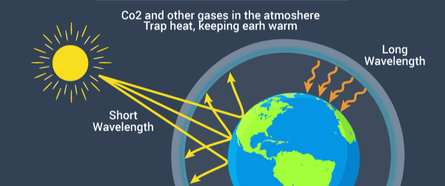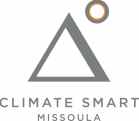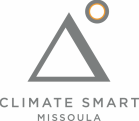The science behind climate change is the foundation of our work. Understanding the basic processes of climate change can help us predict what changes will occur in the future and help determine what human and natural actions contribute to global warming.
Global Climate Change Science Basics
WEATHER VS. CLIMATE
Weather is day to day, month to month, short term changes in temperature and precipitation. While climate is long term changes in temperature and precipitation. The World Meteorological Organization describes climate using a minimum period of 30-year averages.
Weather is day to day, month to month, short term changes in temperature and precipitation. While climate is long term changes in temperature and precipitation. The World Meteorological Organization describes climate using a minimum period of 30-year averages.

THE GREENHOUSE EFFECT
The greenhouse effect is a key component to our global climate, a process by which the atmosphere absorbs and radiates solar energy. It is an essential process that maintains temperature and allows for life on earth. However, it has been intensified by human activity and combustion of fossil fuels.
HOW IT WORKS:
- Short-wave radiation from the sun penetrates earth’s atmosphere.
- Short-wave radiation is reflected from earth as long-wave radiation.
- Long-wave radiation is absorbed by greenhouses gases in the atmosphere
- Heat is re-emitted back to earth’s surface
THE GREENHOUSE GASES:
There are four main greenhouse gases: carbon dioxide (CO₂), methane (CH4), nitrous oxide (N2O), and ozone (CFC's). All come from combustion of fossil fuels such as coal, oil, and natural gas.
Since the 1750’s, atmospheric concentration of greenhouse gases have increased by 40%, 20%, and 150%, respectively, to levels that are unprecedented in at least the past 800,000 years (Intergovernmental Panel on Climate Change 2014). For comparison, an equivalent natural increase in greenhouse gases during the end of the past ice age took over 5,000 years.
Want to Learn More About Climate Science?
- National Geographic shares Seven Things to Know About Climate Change in one simple graphic.
- Get more in-depth with the Yale Program on Climate Change Communication.
- Skeptical Science and the Scientific American explain Why Climate Skeptics are Wrong.
- And here's a great video explaining the basics of the Paris Climate Agreement - what it means, and why it's important.



